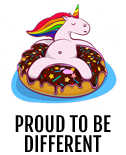Does anyone have good links to color theory tutorials for spriting/tileset creation that go beyond just "triad/tetrad/analagous" basics? For example, a while ago I found this tutorial (can't remember URL now) that said the darker you go the more blue you should add to the shade color, and the lighter you go, the less saturated your color should be. This kind of information is surprisingly difficult to find if you just search "color theory".
Basically, I'm looking for information that's mechanical, in terms of huge, saturation, value, etc, that would describe how to create a good color scheme like professional rpg game tiles.
Basically, I'm looking for information that's mechanical, in terms of huge, saturation, value, etc, that would describe how to create a good color scheme like professional rpg game tiles.
